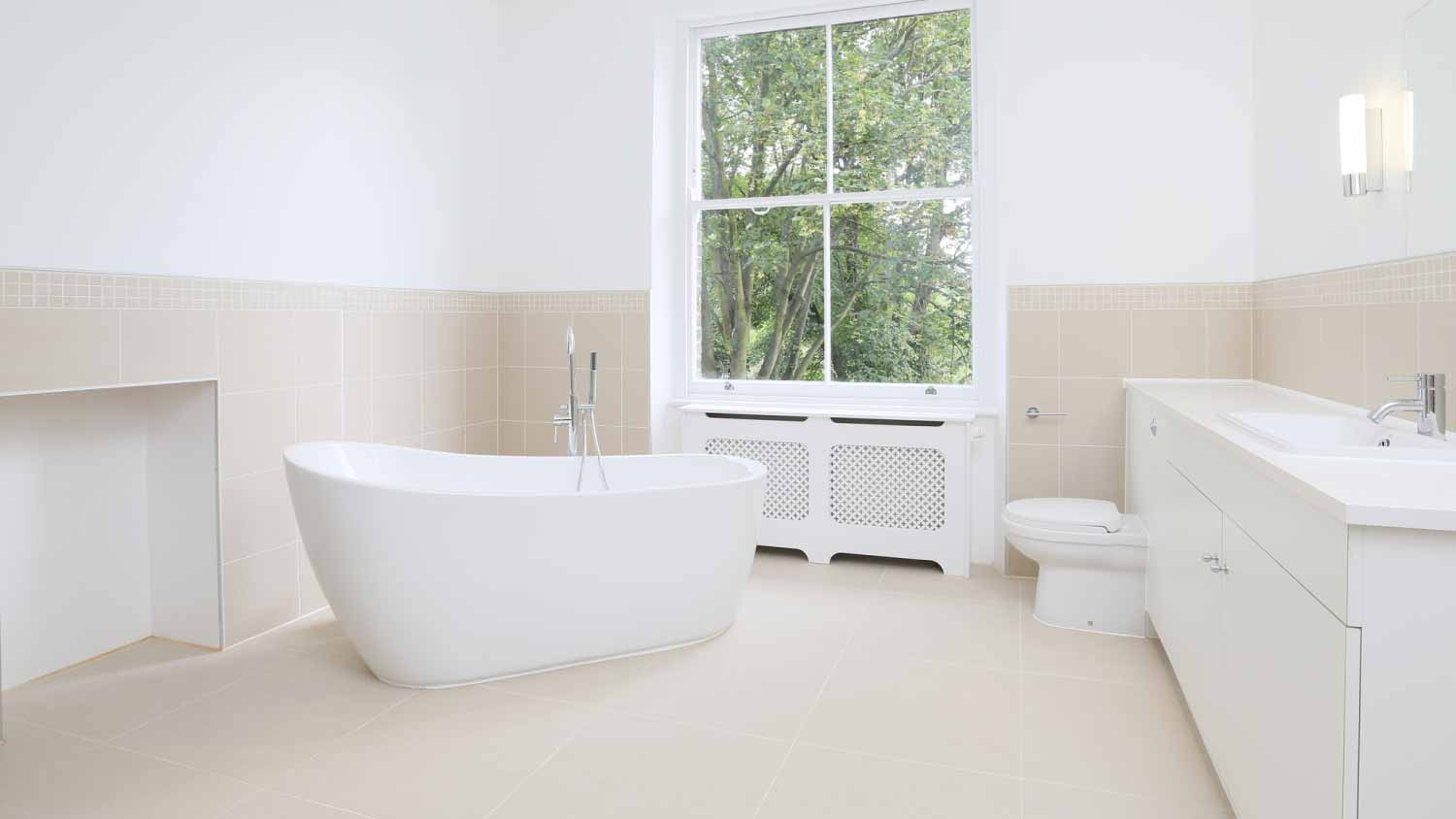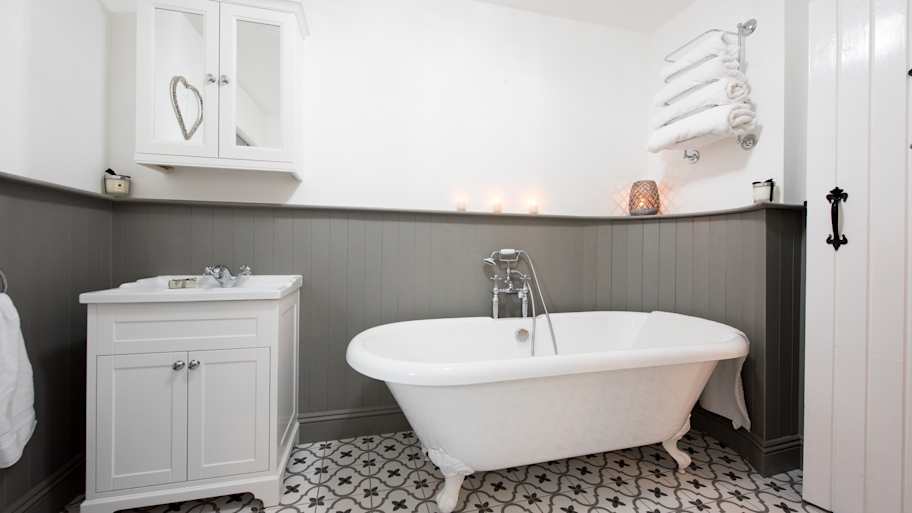
Find out how much it costs to refinish your porcelain sink and the factors that influence the final price to make it look like new, including size, type, and labor.
A peeling finish means it’s time to call a pro


Your bathtub might be peeling due to normal wear and tear, harsh chemicals, prolonged water exposure, and poor bathtub reglazing.
Regardless of the reason, refinishing the bathtub is the only true solution.
Because bathtub refinishing requires harsh chemicals, you should have a pro do the work.
If you’re wondering why your bathtub is peeling, there are a few reasons that could be causing it. Natural wear and tear, harsh cleaners, standing water, or a poor refinishing job may be the culprits. But regardless of why your bathtub is peeling, there is really only one solution: bathtub refinishing.
Over time, bathtubs can peel due to normal wear and tear from constant use. If the bathtub isn’t cleaned regularly, this can exacerbate the problem.
If you notice areas beginning to peel, you can up your maintenance game and ensure the bathtub surface is dried after each use. Removing mats with suction cups can also help preserve the finish, as the suction can sometimes damage the finish and cause it to peel off.
In some cases, using harsh chemicals to clean your bathtub can cause the finish to peel off, especially if it’s already been refinished.
The only way to restore your bathtub to its original glory is to either refinish it yourself or hire a bathtub refinishing professional near you to do the job. However, you can reduce the amount of damage by switching to gentler cleaners.
In many areas of the home, moisture is the culprit, and the bathtub is no exception. Standing water for prolonged periods of time can weaken the bathtub finish and cause it to peel
Obviously, bathtubs are going to get wet, but drying them out after use can prevent water from damaging the finish.
Bathtub reglazing can last for between seven and 10 years, but if it wasn’t done properly, it could be the reason why your bathtub is peeling. To properly refinish or reglaze a bathtub, the original coating must be totally removed.
After this, the surface needs to be sanded or acid etched to create a surface to which the new coating can adhere. After the surface is etched, apply primer and then epoxy coating, and leave it to dry. Finally, you can recaulk the bathtub to seal the seams and reinstall the hardware.
Reglazing the bathtub again is the best solution to fixing a poorly glazed bathtub. While you can do this job yourself, reglazing requires using harsh chemicals to strip the surface. The coating can also give off hazardous fumes, so it’s best to hire a pro for this one.
Calling a pro will be your best bet if you notice your bathtub finish is peeling. It’s possible to do a DIY bathtub refinishing project, but the process is labor intensive and comes with some health risks because it requires working with harsh chemicals. A professional bathtub refinisher will come with the knowledge needed to complete the project safely and properly.
Regular maintenance is the best way to keep your bathtub from peeling. This includes cleaning it regularly with gentle cleaners and making sure that there isn't standing water left in the tub after use. If you opt to refinish your tub, hire a bathtub refinisher with experience and a good track record of successful projects.
From average costs to expert advice, get all the answers you need to get your job done.

Find out how much it costs to refinish your porcelain sink and the factors that influence the final price to make it look like new, including size, type, and labor.

Bathtub refinishing costs are relatively inexpensive and can make your bathroom look like new. Our guide gives you the information to learn more about this process.

Is bathtub refinishing worth it? Yes, it can breathe fresh life into your bathroom by making your tub look brand new. It can also save you hundreds of dollars.

If you're looking for an economical way to spruce up your bath or kitchen, here are the bathtub refinishing questions you should be asking a contractor.

Acrylic bathtubs are a common go-to, but are they right for your bathroom remodel? This guide breaks down the pros and cons of acrylic tubs.

Weighing the pros and cons of freestanding bathtubs? Learn the good, the bad, and the costs to decide which bathtub best fits your bathroom and budget.